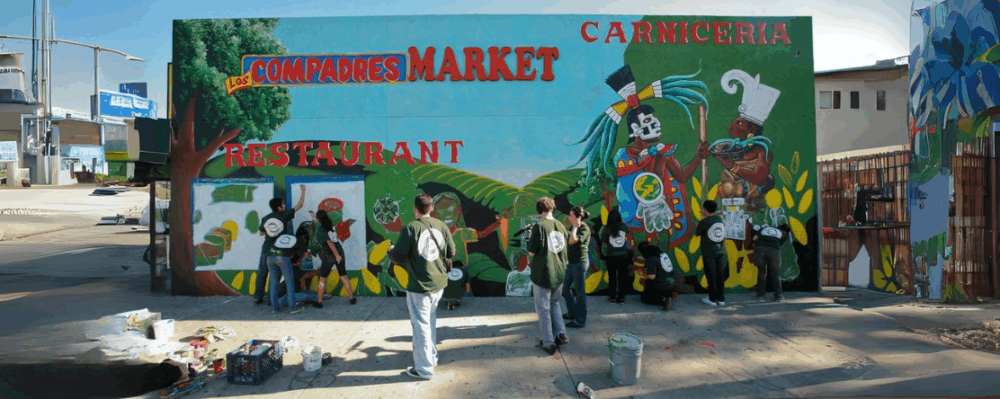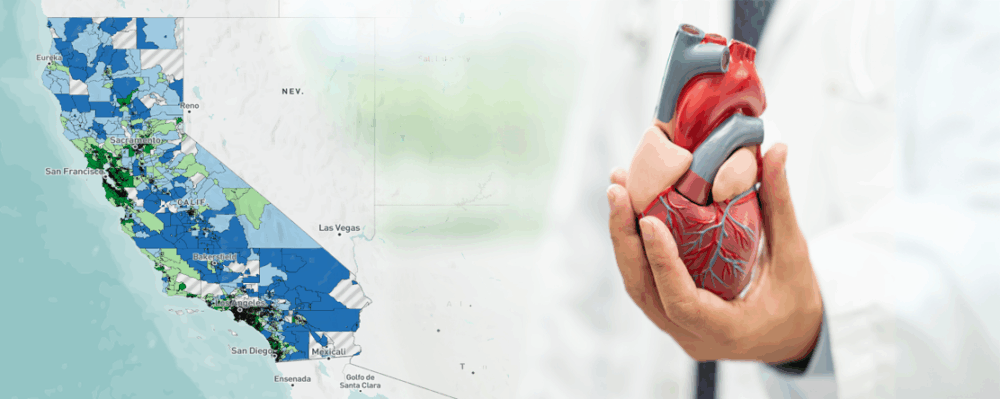
COVID-19 Equity Snapshots
-
Focus Areas
Communicable Disease Prevention, Healthy Communities -
Programs
Public Health Alliance of Southern California -
Strategic Initiatives
COVID-19
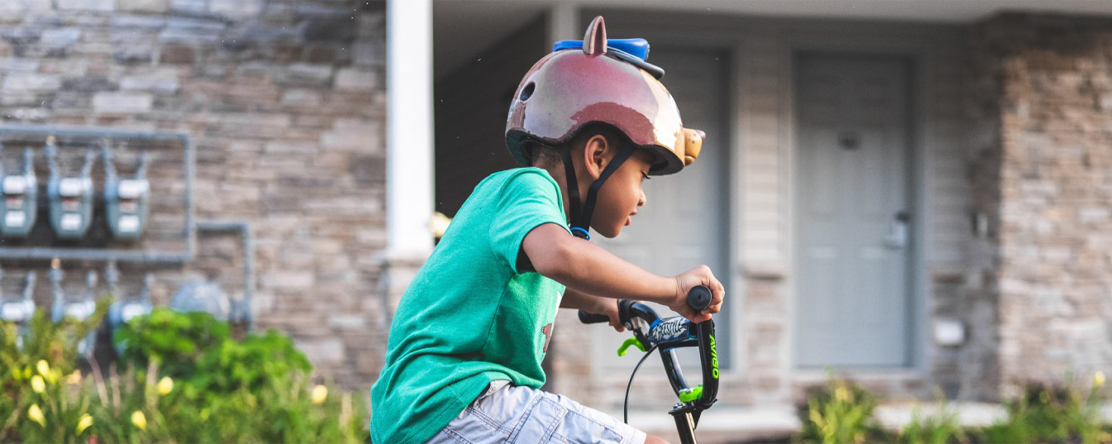
To elevate critical equity concerns emerging as a result of COVID-19, a series from PHI’s Public Health Alliance of Southern California provides curated, consistent resources designed to advance equity and showcase the power of public health in response to the COVID-19 crisis.
The COVID-19 Equity Snapshots are rapidly evolving resources, designed to help communities address critical equity concerns emerging as a result of the pandemic in real-time.
Read the full Equity Snapshots
- Snapshot #1: Advancing a Welcoming & Inclusive Framework in Response to COVID-19
- Snapshot #2: Advancing Health Justice Strategies to Combat COVID-19
- Snapshot #3: Steps to Advance Racial Equity in Response to COVID-19
- Snapshot #4: Food Security as Equity
- Snapshot #5: Advancing Health Equity for Individuals and Families Experiencing Homelessness
- Snapshot #6: Using Data to Advance Equity
- Snapshot #7: Climate Change as a Threat Multiplier
- Snapshot #8: Racism is a Public Health Crisis
See highlights from the Equity Snapshots
COVID-19 Equity Snapshot #1: Advancing a Welcoming & Inclusive Framework in Response to COVID-19
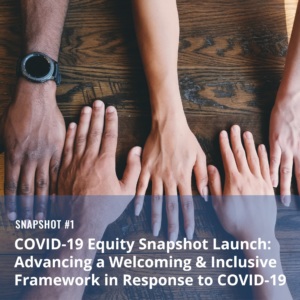 This snapshot includes communications resources to assist health departments in advancing a welcoming and inclusive framework in response to COVID-19, and resources to support health departments in addressing emerging equity priorities in their jurisdictions. Key highlights:
This snapshot includes communications resources to assist health departments in advancing a welcoming and inclusive framework in response to COVID-19, and resources to support health departments in addressing emerging equity priorities in their jurisdictions. Key highlights:
- Avoid “us-vs-them” framing, which evokes fear and drives hostility. Instead use a “Common Good” framing by connecting to a broad “all of us.” Use language that emphasizes collective action and shared values. For example, instead of language like, “Protect yourself by washing your hands” instead try, “When we wash our hands and keep our distance, we protect everyone in our community.”
- The Asian Pacific Policy & Planning Council (A3PCON) and Chinese for Affirmative Action (CAA) launched an online reporting center where individuals can fill out a discrimination report form. They are using the information collected to create targeted education and media campaigns.
Read Snapshot #1: Advancing a Welcoming & Inclusive Framework in Response to COVID-19
COVID-19 Equity Snapshot #2: Advancing Health Justice Strategies to Combat COVID-19
 This snapshot focuses on health and racial justice strategies to combat COVID-19. The approach to COVID-19 must also address the social determinants of health and root causes of inequities that threaten to exacerbate the health, financial, and social impacts of this public health emergency on low-income communities, communities of color, and other communities particularly vulnerable to the impacts of COVID-19. Key highlights include:
This snapshot focuses on health and racial justice strategies to combat COVID-19. The approach to COVID-19 must also address the social determinants of health and root causes of inequities that threaten to exacerbate the health, financial, and social impacts of this public health emergency on low-income communities, communities of color, and other communities particularly vulnerable to the impacts of COVID-19. Key highlights include:
- This blog post, “Health Justice Strategies to Combat COVID-19,” outlines immediate actions state and local governments can take to support low-income and other disproportionately impacted communities to safely shelter in place.
- This ~6:00 minute conversation with Dr. Uché Blackstock of Advancing Health Equity, succinctly outlines how disparities long present in the U.S. medical system are now driving what some call a crisis within a crisis: communities of color across the country are being hit harder by COVID-19 and with fewer resources to address the impact of the crisis.
Read Snapshot #2: Advancing Health Justice Strategies to Combat COVID-19
COVID-19 Equity Snapshot #3: Steps to Advance Racial Equity in Response to COVID-19
 This snapshot provides analysis and resources to assist health departments in identifying and addressing some of the economic and racial equity implications of COVID-19. Key highlights include:
This snapshot provides analysis and resources to assist health departments in identifying and addressing some of the economic and racial equity implications of COVID-19. Key highlights include:
- We know that social distancing is one of the most effective tools we have for flattening the curve, but not all of us have the ability or privilege to safely practice social distancing. A report from the Economic Policy Institute pointed out that less than 1 in 5 Black workers and 1 in 6 Hispanic workers are able to work from home.
- Some initial steps to advance racial equity include collecting demographic data disaggregated by race, focusing interventions on those communities most impacted, partnering with community-based organizations, and advocating for those communities.
Read Snapshot #3: Steps to Advance Racial Equity in Response to COVID-19
COVID-19 Equity Snapshot #4: Food Security as Equity
 This snapshot focuses on food insecurity; specifically, the economic and racial inequities emerging for frontline workers responsible for ensuring we are fed. It’s an opportunity to advance equity for food insecure families, and workers who are part of the national effort to secure America’s health and safety. Key highlights include:
This snapshot focuses on food insecurity; specifically, the economic and racial inequities emerging for frontline workers responsible for ensuring we are fed. It’s an opportunity to advance equity for food insecure families, and workers who are part of the national effort to secure America’s health and safety. Key highlights include:
- Even before the coronavirus, 37 million low-income Americans, disproportionately people of color, were already facing food insecurity. Individuals who experience food insecurity are more likely to have poorer health, and to have diet related conditions like diabetes, all risk factors for the negative health impacts of COVID-19. Rising unemployment and school closures, where students are dependent on the National School Lunch Program, are exacerbating the situation.
- Grocery, retail store, and other food service workers are especially vulnerable to the impacts of COVID-19. These workers often work in tight working conditions, without the ability to follow strict social distancing guidelines. They are often among the lowest paid workers and are among those most likely to be food insecure themselves. The snapshot includes recommendations on how health departments can prioritize worker health and safety.
Read Snapshot #4: Food Security as Equity
COVID-19 Equity Snapshot #5: Advancing Health Equity for Individuals and Families Experiencing Homelessness
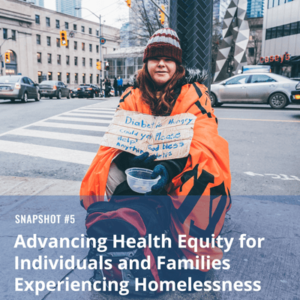 This snapshot highlights another critical equity concern for jurisdictions throughout California, the impact of COVID-19 on individuals and families experiencing homelessness. Key highlights include:
This snapshot highlights another critical equity concern for jurisdictions throughout California, the impact of COVID-19 on individuals and families experiencing homelessness. Key highlights include:
- Counties across Southern California are working hard to address the disproportionate impact of COVID-19 on individuals and families experiencing homelessness. Those jurisdictions who have proactive strategies to connect homeless individuals with temporary and longer-term housing opportunities during this crisis, will emerge from this crisis with an even stronger homeless response system.
- Los Angeles county launched an unprecedented effort called Project Roomkey, a coordinated effort to secure 15,000 hotel and motel rooms in L.A. County. These rooms will act as temporary shelters for seniors 65+ and those suffering from chronic illness.
Read Snapshot #5: Advancing Health Equity for Individuals and Families Experiencing Homelessness
COVID-19 Equity Snapshot #6: Using Data to Advance Equity
 This snapshot explores the importance of data for understanding the impact of this crisis on disproportionately impacted communities. Data is a tool for helping us understand inequities and supports the creation of policies and programs that address the worst outcomes. Key highlights include:
This snapshot explores the importance of data for understanding the impact of this crisis on disproportionately impacted communities. Data is a tool for helping us understand inequities and supports the creation of policies and programs that address the worst outcomes. Key highlights include:
- The data have made it clear that across the country, low-income people and people of color, specifically African Americans, Latinos, Native Americans, Native Hawaiians and Pacific Islanders, are being disproportionately impacted by the worst health impacts of this crisis.
- The Public Health Alliance launched an interactive COVID-19 HPI Resource Map on their California Healthy Places Index (HPI) platform. This platform is designed to support local response efforts and inform equitable resource allocation, program planning, and service delivery.
Read Snapshot #6: Using Data to Advance Equity
COVID-19 Equity Snapshot #7: Climate Change as a Threat Multiplier
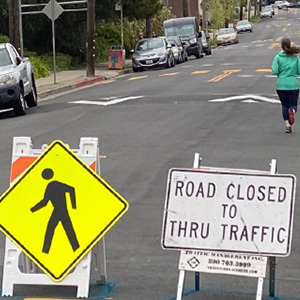 This snapshot includes analysis, resources, and best practices to assist public health departments in identifying and addressing the multiple equity challenges related to COVID-19 and climate change for frontline communities.
This snapshot includes analysis, resources, and best practices to assist public health departments in identifying and addressing the multiple equity challenges related to COVID-19 and climate change for frontline communities.
As the COVID-19 crisis continues to exacerbate inequities, data shows us some individuals, particularly those individuals with underlying health conditions, like cardiovascular and diabetes-related conditions, as well as asthma and respiratory infections, may be at increased risk of poor health outcomes as a result of COVID-19.
In addition, people without the economic and social resources to combat the impacts of COVID-19, including those who are at risk of homelessness, those unable to work from home, and those exposed to the worst impacts of extreme heat, wildfires, floods and increasing air pollution, are suffering the greatest health and economic consequences of this crisis.
Read Snapshot #7: Climate Change as a Threat Multiplier
COVID-19 Equity Snapshot #8: Racism is a Public Health Crisis
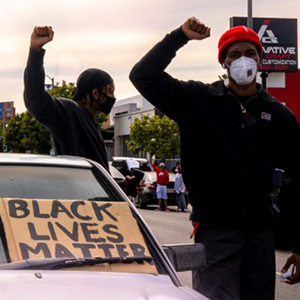 This snapshot includes analysis, resources, and best practices to assist public health departments in responding as public health professionals and anti-racist allies in supporting the Movement for Black lives and advancing justice.
This snapshot includes analysis, resources, and best practices to assist public health departments in responding as public health professionals and anti-racist allies in supporting the Movement for Black lives and advancing justice.
In the wake of the unjust killings of George Floyd, Breonna Taylor, and Ahmaud Arbery, individuals and leaders across the country are waking up to what many of us in the public health field already knew—racism is a public health crisis. Police violence and COVID-19 both disproportionately impact Black men. Black men are both 2.5 times more likely to die from COVID-19 and 2.5 times more likely to be killed by police than their White counterparts. This injustice further emphasizes the importance of addressing the true root cause behind inequities in both outcomes: racism.
Originally published by Public Health Alliance of Southern California
Work With Us
You change the world. We do the rest. Explore fiscal sponsorship at PHI.
Support Us
Together, we can accelerate our response to public health’s most critical issues.
Find Employment
Begin your career at the Public Health Institute.
